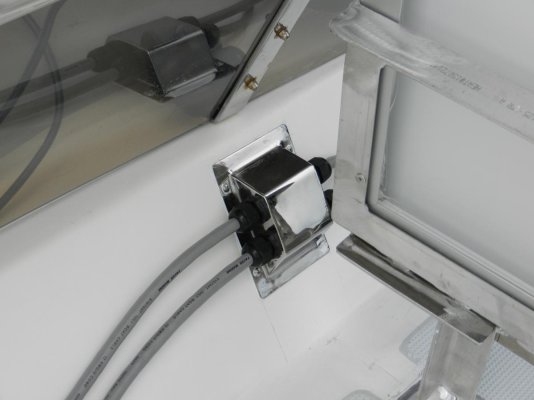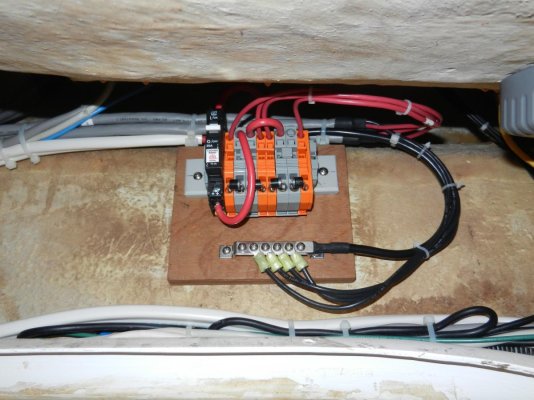Maerin
Guru
I puzzled over how to manage routing conductors from 4 panels to inside. I ended up combining the conductors into a 2 conductor round cable that a cable gland would seal. I wanted to wire the panels in parallel/series to maximize output due to expected shading so it was helpful to have each panel's output accessible.I drilled 2 holes in gland, very little cable from panel to gland, none laying on deck, and it is under panel, so stays dry unless taking water over bow
The DIN rail junctions enabled me to jumper the panel outputs and add diodes to allow half the array full output when the other half is shaded. It was a compromise I accepted at the planning stage, and has panned out as anticipated.
The controller & panel mfrs both recommended a breaker in the panel output, and the DIN rail made that easy.


